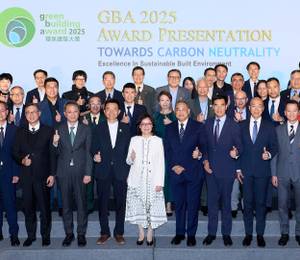Singapore – Surbana Jurong (SJ), one of the largest urban and infrastructure consulting firms in Asia, held a groundbreaking ceremony on 18 January 2019 for its new campus, which will house its global headquarters in Singapore.
Named ‘Surbana Jurong Campus’, the 68,915 square metres development will be built in Jurong Innovation District (JID), a vibrant ecosystem of enterprises in advanced manufacturing, urban solutions and smart logistics. The Campus can accommodate up to 4,000 employees and will be completed by 2021.
The Campus will support SJ’s rapid growth by facilitating stronger teamwork and knowledge sharing among its Singapore and global talents, and will serve as the nerve centre for research and development of innovation for the built environment as SJ transitions to applied research to create and bring practical and viable solutions to the industry and community.
Designed by Safdie Surbana Jurong, a collaboration between Safdie Architects and Surbana Jurong established in 2017, the Campus will serve to demonstrate what a sustainable, people-centric and future-ready workplace would look like. Created by renowned architect Mr Moshe Safdie, the design of the new headquarters embodies the character of Singapore as the Garden City by integrating the structure harmoniously with the natural landscape. Situated on a previously undeveloped greenfield site, the Campus will push the boundaries of sustainable design in both construction and operation. The development will demonstrate SJ’s leadership in leveraging Building Information Modelling (BIM) and extending it to a comprehensive Integrated Digital Delivery, or IDD. IDD fully integrates processes and stakeholders along the development value chain through advanced info-communications technology and smart technologies.
In addition, the Campus is designed to meet Singapore’s Building and Construction Authority’s (BCA) Green Mark Platinum Certification for Super Low Energy Building. The Campus utilises solar photovoltaic technology which will yield around 340MWH of renewable energy annually, and integrates features such as rain gardens and bio-swale to enhance water sustenance. It also boasts many other green technologies, including smart lighting control, underfloor air-distribution system, and predictive smart building control systems such as live energy and water management dashboards.












